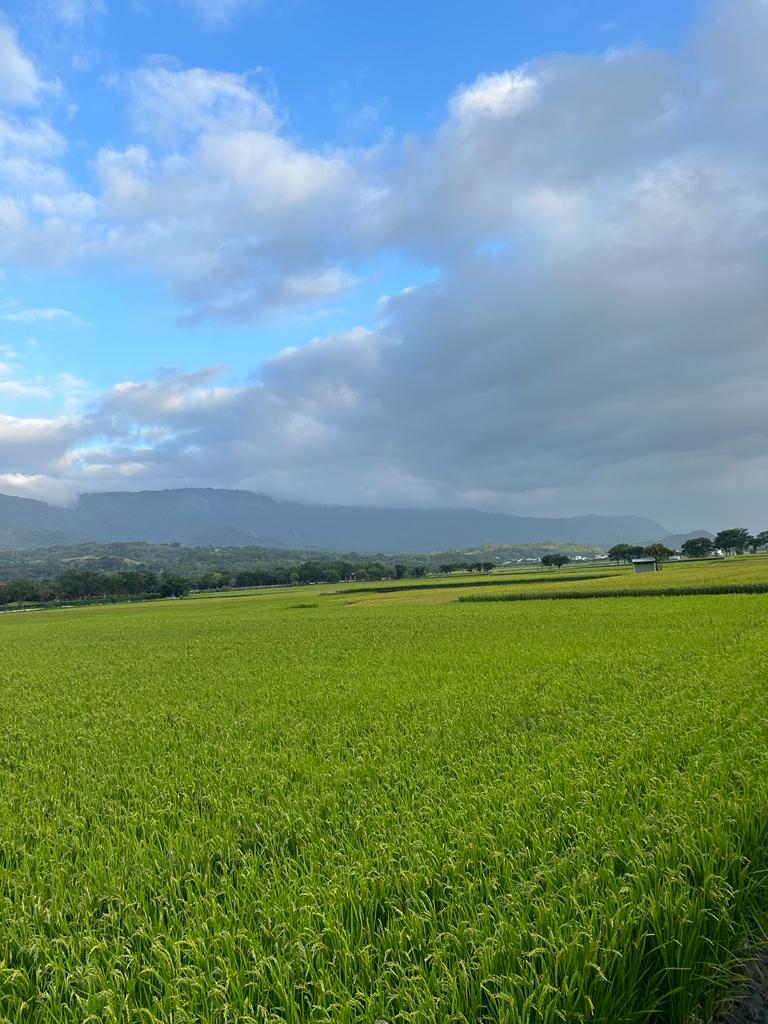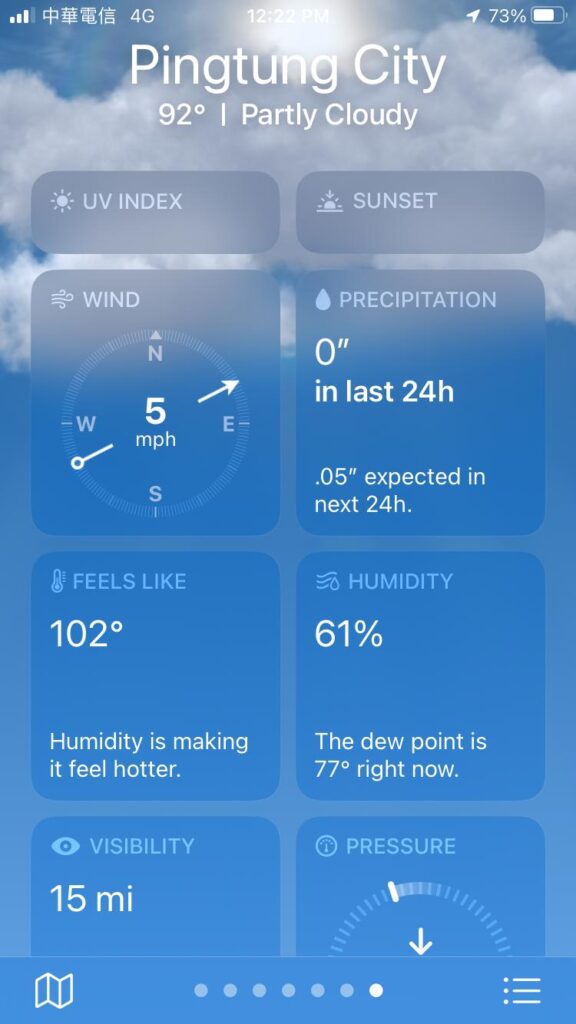Today we had a relaxed start (except for the professors who got up early to visit a park). After a crab sandwich, we headed to the beach! The wind was strong and the sun was shining. A few of us ventured into the warm blue water despite the red flag but were told to come out within a few minutes because of possible hidden rocks. We wandered along the edge of the water picking up pretty shells, corals, and rocks. We saw scuttling hermit crabs and little baby sea turtles trying to make it past the tumbling waves. We tried to help them and I hope they are well on their journey by now. After lunch, we climbed on the bus and passed the four-hour drive by sleeping (at least I did) and singing. We also spent time brainstorming our research projects with our professors. I am hoping to do a storybook accompanied by illustrations discussing spirituality and agriculture in Taiwan. The views at the end of the drive were stunning as we entered Chishang. Surrounded by misty mountains, a low golden sun illuminated yellow-green rice fields, carefully maintained and terraced. Before we reached our hotel we stopped by a rice and art museum where we were able to see the old farming tools and equipment used to till and process rice grains. The mill was two stories high! To wrap up the day we had a delightful local dinner and sang the chefs a song we had been learning in thanks.




